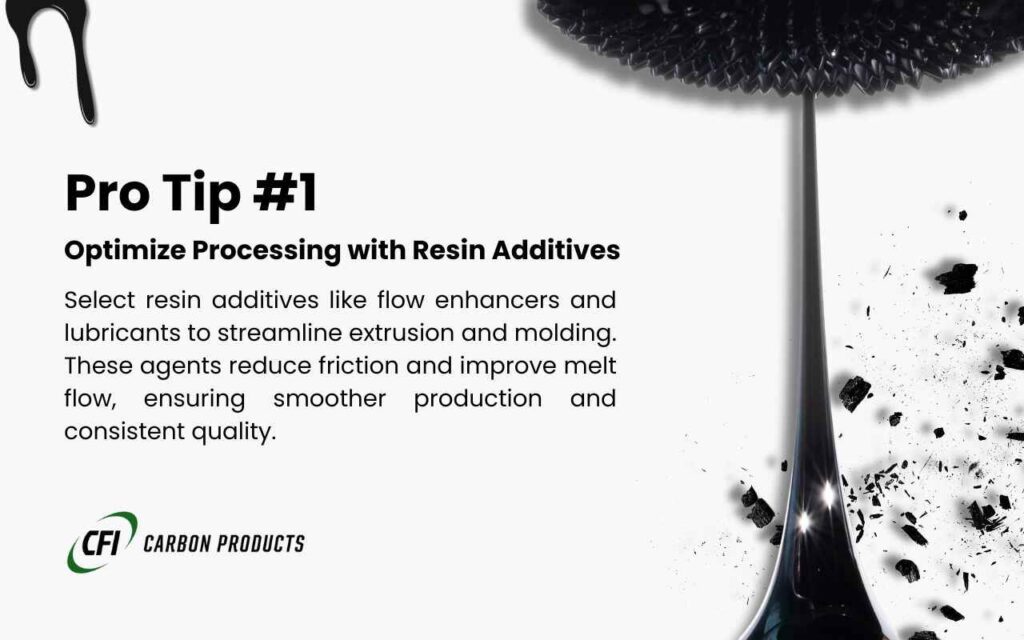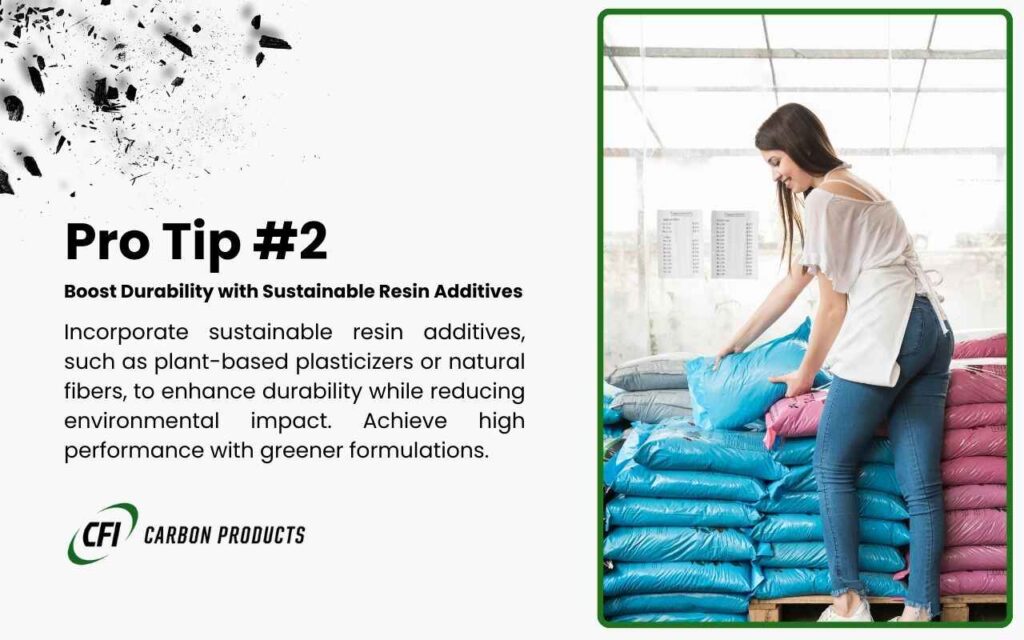Polymer engineers and chemists utilize resin additives to enhance, modify, or completely transform base resins into materials with specific performance characteristics.
Raw resin systems would lack the diverse properties required across numerous industrial applications without such modification agents.
Material scientists working in plastics and rubber manufacturing must thoroughly understand the available modification options to develop optimized formulations.
The Fundamental Role of Resin Additives in Polymer Engineering
Modern manufacturing demands materials with precisely tailored properties – impossible to achieve with unmodified resins. The pet resin additives market continues expanding as manufacturers seek solutions that improve performance while managing costs.

Depending on application requirements, modification components might constitute anywhere from less than 1% to about half of a formulation’s total composition.
Classification of Resin Additives
Polymer modification agents generally fall into several functional categories:
1. Functional Modifiers
Substances altering core performance characteristics:
- Reinforcing Agents: Glass fibers, carbon fibers, and minerals that boost mechanical strength
- Plasticizers: Compounds increasing flexibility by lowering glass transition temperature
- Impact Modifiers: Materials enhancing toughness against physical trauma
- Flame Retardants: Substances reducing flammability and fire spread
2. Processing Aids
Components facilitating manufacturing:
- Lubricants: Reduce friction during extrusion and molding
- Flow Enhancers: Improve melt characteristics and processing
- Mold Release Agents: Prevent adhesion to tooling surfaces
- Thinners and Thixotropes: Adjust viscosity for application needs
3. Stabilizers
Compounds preventing degradation:
- Antioxidants: Combat oxidative breakdown
- UV Stabilizers: Shield against sunlight damage
- Heat Stabilizers: Protect during high-temperature processing
4. Aesthetic Modifiers
Elements affecting visual properties:
- Colorants: Organic and inorganic pigments providing specific hues
- Clarifying Agents: Increase transparency in crystalline polymers
- Matting Agents: Control surface gloss levels
Key Resin Additives and Their Applications
The world of polymer modification spans countless chemical compositions and physical forms, each designed to address specific challenges faced by manufacturers.
Consider the differences between commodity plastics and high-performance composites – this vast performance gap exists largely because of carefully selected modification strategies.

Let’s examine how industries leverage resin additives to achieve critical material properties.
Mineral Fillers and Reinforcements
Traditionally, manufacturers have incorporated calcium carbonate, talc, and silica to reduce costs and modify basic properties. However, newer alternatives offer more than simple bulk or reinforcement.
Austin Black 325 represents one such advanced option, providing significant performance advantages over conventional carbon black.
Unlike oil-derived carbon black, Austin Black 325 comes from coal resources and features a distinct lightweight, platy structure.
This unique morphology creates exceptional barrier properties against gases and chemicals – crucial for applications requiring impermeability and resistance to harsh environments.
Conductivity Modifiers
When engineers need to transform inherently insulating polymers into electrically functional materials, they turn to specialized conductivity enhancers, including:
- Graphitic carbon structures
- Metallic powders and fibers
- Specialized conductive polymer alloys
- Carbon nanotubes and nanomaterials
The electronics industry particularly values such materials for EMI shielding, static dissipation, and creating selective conductive pathways in otherwise insulating matrices.
Epoxy Resin Additives
High-performance epoxy systems gain their versatility through carefully selected modification packages:
- Viscosity reducers for improved processing
- Cure initiators and accelerators controlling reaction kinetics
- Flexibility enhancers reducing inherent brittleness
- Epoxy filler materials providing dimensional control
Products from companies like Stone Coat demonstrate how precisely formulated epoxy systems excel in demanding applications.
Stonecoat countertops achieve their durability and aesthetic appeal through specially engineered additive combinations providing heat resistance, UV stability, and attractive visual properties.
Appearance Control Agents
Consumer-facing products often require precise visual characteristics:
- Custom color packages
- Metallic and pearlescent effects
- Textural modifiers
- Transparency control agents
Epoxy colors range from subtle tints to vibrant solid hues, achieved through modification systems designed specifically for compatibility with particular resin backbones.
Sustainable Resin Additives
Growing environmental concerns drive innovation toward greener alternatives:
- Plant-based plasticizers
- Natural fibers from agricultural waste
- Biodegradable processing aids
- Post-consumer recycled content
These sustainable options allow manufacturers to reduce environmental impact while maintaining critical performance parameters. Research into bio-based and naturally derived modification agents represents one of polymer science’s most active frontiers.
Selecting Appropriate Modifiers
Engineers must evaluate several key factors when choosing resin additives:
- Chemical Compatibility: Ensuring the modifier works harmoniously with the base resin without unintended reactions
- Processing Considerations: Understanding how each addition affects manufacturing methods and equipment requirements
- Performance Targets: Selecting modifiers that specifically address the property gaps in unmodified resin
- Economic Viability: Balancing material costs against performance improvements
- Regulatory Landscape: Navigating complex compliance requirements for specific industries and applications

Engineering a Superior Alternative With Austin Black 325
Applications demanding exceptional barrier properties and chemical resistance benefit significantly from Austin Black 325’s unique structure.
Unlike traditional carbon black, its distinctive platy morphology creates tortuous pathways that gases and chemicals struggle to penetrate. This coal-derived product also offers cost advantages compared to petroleum-based alternatives.
Key applications showcasing Austin Black 325’s advantages include:
- Tire and rubber products requiring durability
- Waterproofing systems for construction
- Chemical storage and handling components
- Food packaging with enhanced barrier needs
- Specialized adhesives and sealants
Beyond Basic Modification
Material scientists today modify resins and engineer entirely new performance paradigms through strategic additive selection.
By understanding the complex interplay between various modification agents and base polymers, chemists develop materials precisely matched to application-specific requirements.
As industries demand greater performance, lower environmental impact, and competitive costs, resin additives play an increasingly central role in materials engineering.
For formulators seeking alternatives to traditional carbon black, Austin Black 325 provides compelling advantages through its unique structure and performance profile, delivering superior barrier properties and chemical resistance across diverse applications.
Ready to Optimize Your Formulations?
Request Technical Support from us at CFI Carbon Products to discover how Austin Black 325 can transform your material performance while potentially reducing costs.
Our team provides formulation assistance and application-specific guidance tailored to your manufacturing challenges.

